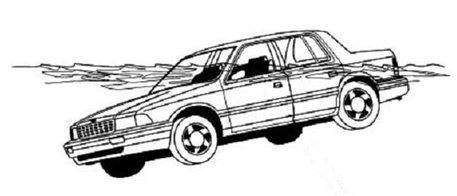According to the American Automobile Association, an estimated 11,000 vehicles crashed into bodies of water in one year. The MythBusters tested various methods of escaping a sinking car, in this case using a Ford Taurus.
This terrifying scenario can be life-threatening, as the water pressure exerted against a sinking auto makes it extremely difficult to open a door and swim to safety.
MythBusters Jamie Hyneman and Adam Savage took the plunge to verify the scientific logic that until a car completely fills with water and equalizes the pressure inside and outside it, it's physically impossible to open that escape hatch.
To replicate the submerged-car scenario, Jamie and Adam hopped into an old sedan and were gently dropped into a 13-foot-deep swimming pool. Adam's job was to try to open the driver's side door, while Jamie — outfitted with a rebreather — perched comfortably in the backseat and monitored the vehicle's air supply. As suspected, the water pressure differential between the inside and outside of the cabin was simply too great for Adam to pry open the driver's side door.
But once the sinking sedan had filled to the brim, the pressure difference stabilized, allowing the door latch to release. Although Adam eventually was able to get out, he had to resort to a backup air supply before he made a break.
The final analysis: A sinking car is indeed a tough nut to crack. If a car falls into the water and becomes submerged, the door cannot be opened until the interior is flooded.
The pressure differential between outside and inside when the car is submerged is too great for a man to force the door, and the pressure must first be equalized, which means the interior must be flooded first. Adam was forced to resort to emergency air in his first test, since he expended a great deal of energy (and oxygen) in attempting to open the door. A second test later showed it to be possible to escape the car simply by opening the door, but only by remaining calm and not attempting to open the door until the interior is well and truly flooded, so as to conserve oxygen while holding one's breath.
A person can escape a car that has fallen into the water...
At this point, the pressure difference has become too great. Adam is unable to escape.
They also proved that breaking the window is a viable way to escape a sinking car, if one has a suitable tool. Though breaking the window quickly floods the interior, Adam only has to hold his breath for a few seconds before climbing through the simulated "broken window" and surfacing. A person can open a window in a submerged car by...
Using a test weight of 350 pounds (160 kg) (equivalent to pressure differential from just two feet of immersion), the pressure of the window glass against the frame is so great that no amount of effort can move the gear. It is more likely that the window handle will be broken.
Though more powerful, power windows still cannot overcome the pressure differential.
Contrary to popular belief, though, power windows can withstand immersion in fresh water for prolonged periods and still function. The electricity does not short out immediately.
Window glass is tempered and resistant to impact from blunt objects. Keys are ineffective.
A cell phone is ineffective.
Boots are ineffective.
The device is designed with a pointed tip designed to shatter tempered glass. The hammer broke the window on the first try.
The point of the punch can work like the tip of the hammer, and punches are sold for the purpose of breaking window glass (see below). The punch broke the window on the first try.
See also:
Source(s): dsc.discovery.com, wikipedia


No comments:
Post a Comment
Thanks for leaving a comment - it is welcomed!☺